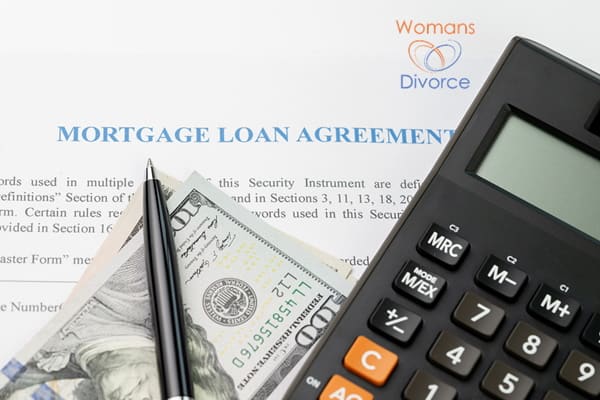- Home
- Who Gets What?
- Divorce Mortgage Options
Understanding Your Divorce Mortgage Options
When you're getting a divorce, mortgage issues need to be addressed if the two of you own a home together.
By Tracy Achen, Divorce Coach
Even if your divorce decree states that your husband will be responsible for the mortgage, you need to realize that this won't remove your liability in the eyes of the lender. When the two of you signed the original mortgage papers, you and your husband agreed to be jointly responsible for repaying the loan.
To remove this liability, the house will need to be sold or the mortgage will either need to be refinanced or assumed. You can also choose to maintain the mortgage the way it is, but this is a risky proposition.
Four Divorce Mortgage Options
Decisions concerning the marital home and mortgage can have a big impact on post-divorce finances. To help you understand what your options are, read the following ways to handle your divorce mortgage obligations.
1. Retain the Original Mortgage
Unfortunately, this is the option that many people unknowingly make when they get a divorce. In essence one spouse agrees to keep the home, but the mortgage isn't changed after the divorce is finalized. If this is your situation, realize that if your ex doesn't make the mortgage payments, it can ruin your credit if your ex defaults on the loan.
Maybe you want to retain the co-ownership of the home and leave the original mortgage intact until the children are grown. Once the children are gone, the house can be sold and the proceeds can be split. To make this arrangement work, both you and your ex should be able to cooperate in such a way that the mortgage payments, taxes and upkeep are paid in a timely fashion.
Like I said earlier, this is a risky proposition. First of all, do you really want to remain that closely tied to your ex. Secondly, if your ex has any future liens filed against him, they can be attached to your house. This ties up the title and makes it harder to sell the house. And finally, having an existing mortgage can make it difficult to qualify for a new mortgage because it will increase your debt to income ratio. You're better off trying some of the other divorce mortgage options below.
2. Sell the House and Pay Off the Mortgage
One of the easiest ways to remove your liability from the mortgage when getting divorced is by selling the marital home. The proceeds from the sale will first be used to pay off the existing mortgage, and anything that is left over after closing costs can then be split between you and your spouse.
Generally, it's a good idea to sell the house before your divorce is finalized to prevent future opportunities to fight over the sales price. Plus, neither of you will have to worry about the other not making mortgage payments, maintaining the house, or paying taxes and insurance.
3. One Spouse Keeps the Home and Refinances the Mortgage
This is a common strategy when one spouse wants to keep the home. In this situation, the spouse who wants the house generally buys out the other spouse's equity share and refinances the mortgage into his or her own name. If you'll be keeping the house, it is important to have your spouse sign a quit claim deed which relinquishes his ownership and rights to the property.

If your spouse is the one who will be keeping the home, it is very important that the mortgage be refinanced in his name only. As long as your name remains on the mortgage, you will continue to be liable for the mortgage payments should your ex default on the loan.
If your divorce is not yet finalized and your ex will be keeping the home, it's a good idea to include language in your divorce decree that your spouse will refinance the home. Along with this, you should also have your spouse sign a Deed of Trust to Secure Assumption. This gives you the right to foreclose and take back ownership of the house if he fails to refinance and subsequently defaults on the mortgage.
After your divorce papers are signed and everything is finalized, you need to notify the mortgage lender of your security interest and request that they notify you at your current address of any missed payments.
4. One Spouse Keeps the Home and Assumes the Mortgage
A divorce mortgage assumption can be a good option if your bank will approve it, but you should realize that not all mortgages are assumable. Therefore, the first thing to do is to contact your mortgage lender to see if they will allow you to assume the loan.
If the mortgage lender will let you assume the loan, you begin the process by filling out the assumption agreement and a release of liability. The lender will also need documentation to determine if you can pay the mortgage based solely on your own income. If you meet the lenders underwriting guidelines, you may also need to furnish a copy of the quit claim deed as well as a copy of your divorce decree. If the assumption is approved, the lender generally executes a release of liability to the other spouse.
This can be a good option if your bank will allow the assumption and you have good terms on your existing mortgage. Even though there are assumption fees, they are usually much less than what it would cost to refinance the mortgage.
Related articles:
